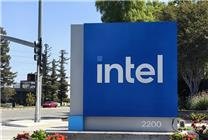NVIDIA’s $5 Billion Investment in Intel: Implications for the Semiconductor Industry
Summary:
- NVIDIA’s substantial investment in Intel has triggered a surge in stock prices for both companies, indicating strong market confidence.
- While some semiconductor firms benefit from this collaboration, companies like AMD and TSMC experience stock declines.
- Experts predict that TSMC’s market stronghold will remain intact for the foreseeable future despite this new alliance.
On September 19, NVIDIA made headlines with its strategic investment of $5 billion in Intel, resulting in a significant increase in stock prices for both corporations. This move has been met with enthusiasm from the market, which views the collaboration as a promising development in the semiconductor industry.
The ripple effect of this partnership extended beyond just NVIDIA and Intel; several firms within the semiconductor supply chain, including ASML, LAM Research, and KLA, saw notable increases in their stock valuations. These companies, primarily specializing in lithography equipment, stand to benefit from the heightened activity in chip manufacturing triggered by the collaboration.
However, not all companies experienced a boost. Tech giants AMD and ARM, as well as TSMC, faced declines on the same day. The market has expressed concern over potential shifts in NVIDIA’s chip manufacturing strategies that could disadvantage these firms. Yet, the specifics of the collaboration between NVIDIA and Intel have alleviated these fears. Notably, both companies have reaffirmed that their respective operations will remain unaffected and that NVIDIA currently has no intentions of outsourcing chip manufacturing to Intel.
What implications does this cooperation hold for TSMC? Renowned analyst Guo Mingchi asserts that TSMC’s advanced processes and AI chip production are unlikely to suffer impacts for several years. He emphasizes that TSMC’s dominance in advanced semiconductor processes is expected to persist until at least 2030, meaning Intel’s partnership with NVIDIA is unlikely to disrupt this trajectory.
This collaboration could pose challenges for competitors like AMD and Broadcom, particularly regarding their production of PC, GPU, and server chips, as well as network chips. Both AMD and Broadcom rely on TSMC for their chip production, which may place additional orders at TSMC, further complicating the competitive landscape.
Importantly, while NVIDIA and Intel are diversifying their chip manufacturing strategies, they continue to place significant orders with TSMC. Additionally, the network chips often don’t require advanced processes, which constitute a minor segment of TSMC’s overall revenue. Therefore, the overarching sentiment suggests that TSMC’s market position remains secure and resilient despite these partnerships.
The strategic alliance between NVIDIA and Intel opens new avenues for innovation and competitiveness in the semiconductor landscape, emphasizing a collaborative approach in an industry characterized by rapid advances and intense competition. As companies navigate this evolving environment, market observers will closely monitor the consequences of these developments on existing players and their strategies moving forward.







